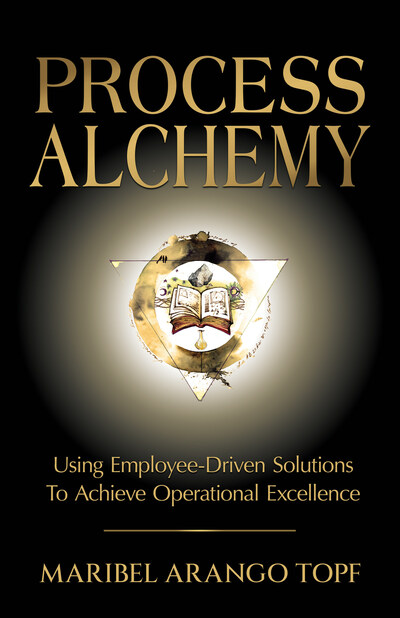In this rapidly changing world, operational excellence via continuous improvement (CI) is a necessity for organizations to remain relevant and profitable. But don’t count on old-school thinking and hierarchies to win the day.
“Traditional management models often rely on linear processes and hierarchies, but organizations need to adopt dynamic systems theory,” says business process Maribel Topf, author of Process Alchemy: Using Employee Driven Solutions To Achieve Operational Excellence (2024, Indie Books International).

According to Topf, operational excellence has diverse benefits, from increased efficiency and productivity to enhanced customer satisfaction and profitability.
“Dynamic systems theory recognizes businesses as complex, adaptive systems where multiple variables interact unpredictably,” says Topf.
Over the last twelve years, Topf has successfully managed the continuous improvement programs for two companies for the Fortune 1000 company Snap-on. She has reviewed and overseen over 10,000 employee-led continuous improvement projects, gaining valuable lessons on business process improvement.
“Nature provides fascinating examples of dynamic systems theory at work, such as ants and bees, where efficiency thrives through independent work guided by straightforward rules and signaling methods,” says Topf. “Bottlenecks are avoided by not having one organism attempting to organize or make group decisions.”
Continuous improvement (CI) begins with examining an organization’s cultural and operational positive and negative aspects. Topf’s book cites eight lessons to help create operational excellence at a business:
Freedom fuels innovation. Teams thrive when given the freedom and empowerment to tackle issues with minimal bureaucracy—without excessive approvals or documentation.
Recognition drives effort. Your employees work harder when their ideas and efforts are consistently acknowledged, even in small gestures. Even if not implemented, recognizing and evaluating their ideas is crucial for sustaining their engagement and making them feel valued.
Foster culture through storytelling. Stories about managers’ behavior, how failures were managed, and how credit was distributed all shape and reinforce the organizational culture. These narratives become integral parts of how culture is perceived and upheld.
More management is not needed to drive transformation. Each additional supervisor increases meetings and content requests. Each manager introduces about 1.5 full-time equivalent employees’ worth of unnecessary work to their team. In short, more layers of management are likely to lead to higher overhead and a slowdown in work.

The CI practitioner doesn’t need to be a subject matter expert. A genuine CI practitioner remains independent of any specific department. The role of the facilitator is to bring out the team’s creativity and insights. A CI practitioner observes body language, gathers information, fosters alignment, and ensures the team’s productivity.
A CI practitioner can manage multiple projects. A CI practitioner is a resource, not the lead. Teams are responsible for 95 percent of the work. The CI practitioner facilitates important process-gathering meetings, acts as a mediator, aids in creating decision-making rules, and fulfills similar supportive roles.
Multitasking is not a good thing. The greatest killer of organizational productivity is multitasking at all levels. The continuous shifting of attention among multiple priorities only contributes to significant delays in decision-making and execution. When a task is interrupted midstream, time is required to refamiliarize yourself with the work and reset to where they were in the process. Often, reworking will be involved.
Data gathering is not straightforward. One of our greatest challenges is the amount of data collected right now. There’s a common misconception that merely connecting the dots will lead to profound insights. Some of the best data gathering comes from personal observation, real-time manual collection, and auditing of data acquisition processes.
Topf says it’s worth noting that many hive-style insects and animals use a variety of signals to communicate instructions quickly and effectively. This underscores the importance of communication at all levels in achieving operational excellence in business.
“Both traditional management models and dynamic systems processes work with constant feedback loops, enabling teams to promptly respond to challenges and opportunities. A dynamic approach to dealing with the inherent complexities of organizational change involves continuous feedback, adaptation, and learning,” says Topf.
Understanding how communication and data flow throughout the organization is crucial for identifying gaps or inefficient handoffs, which will significantly contribute to achieving short- and long-term victories.”
